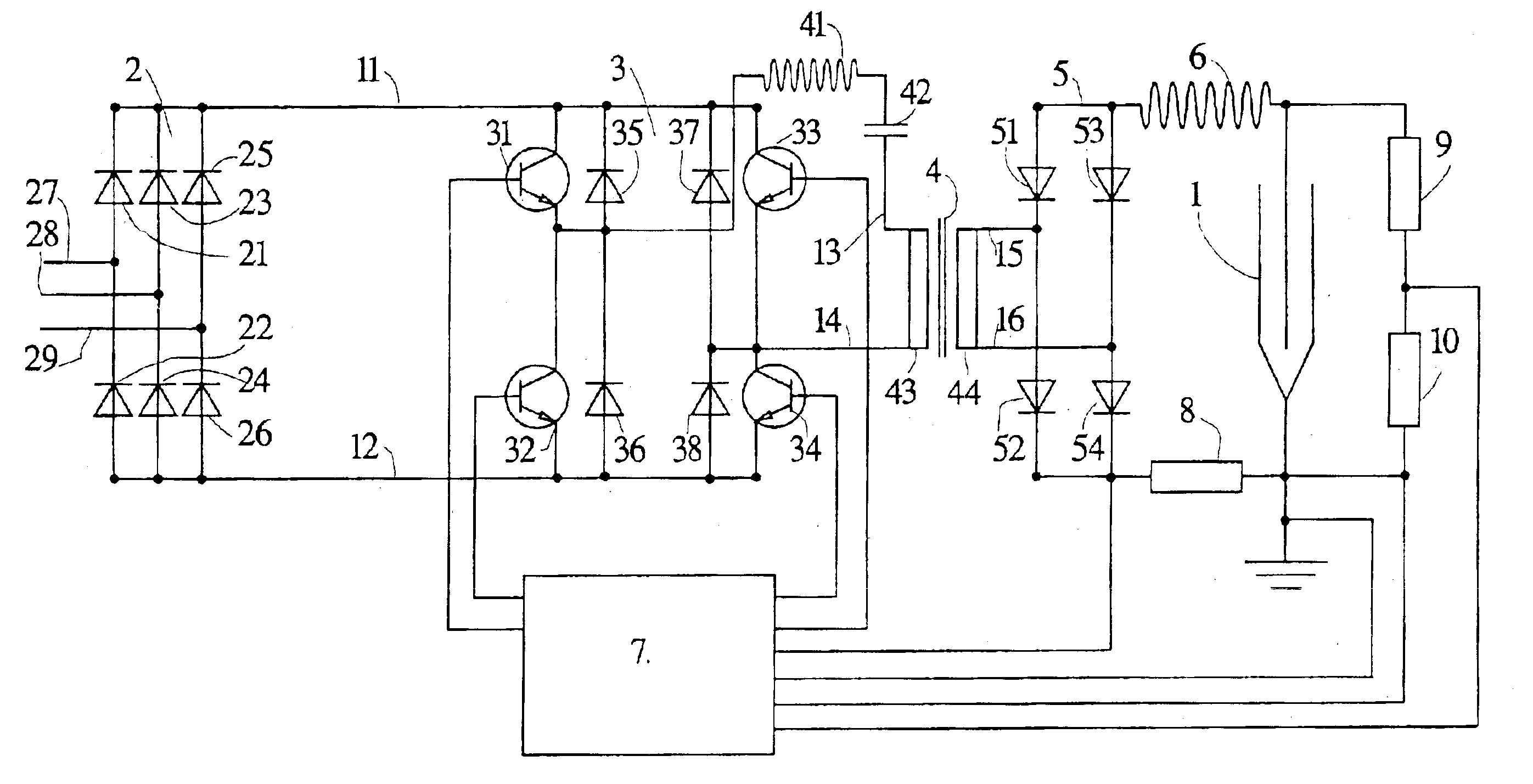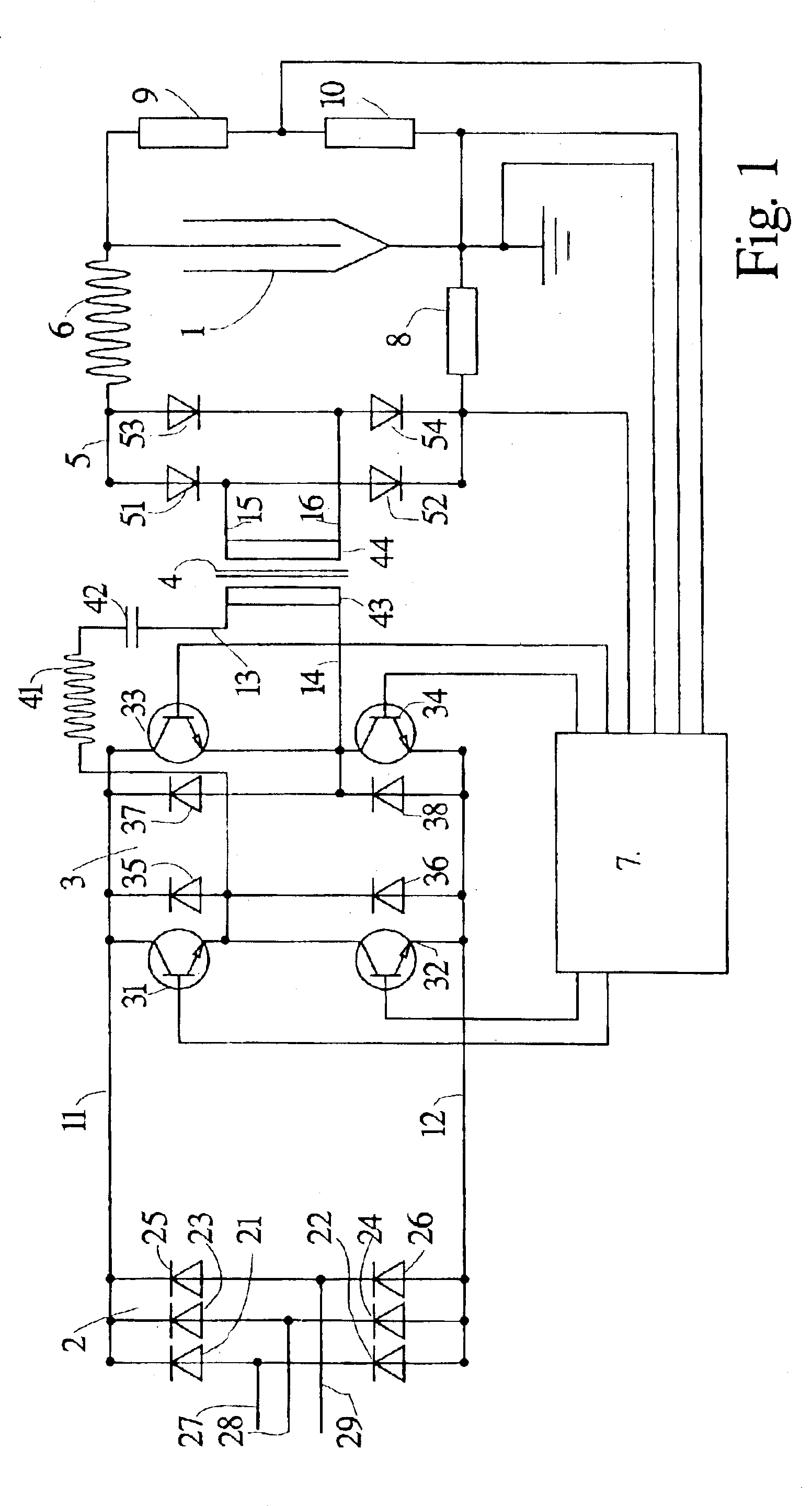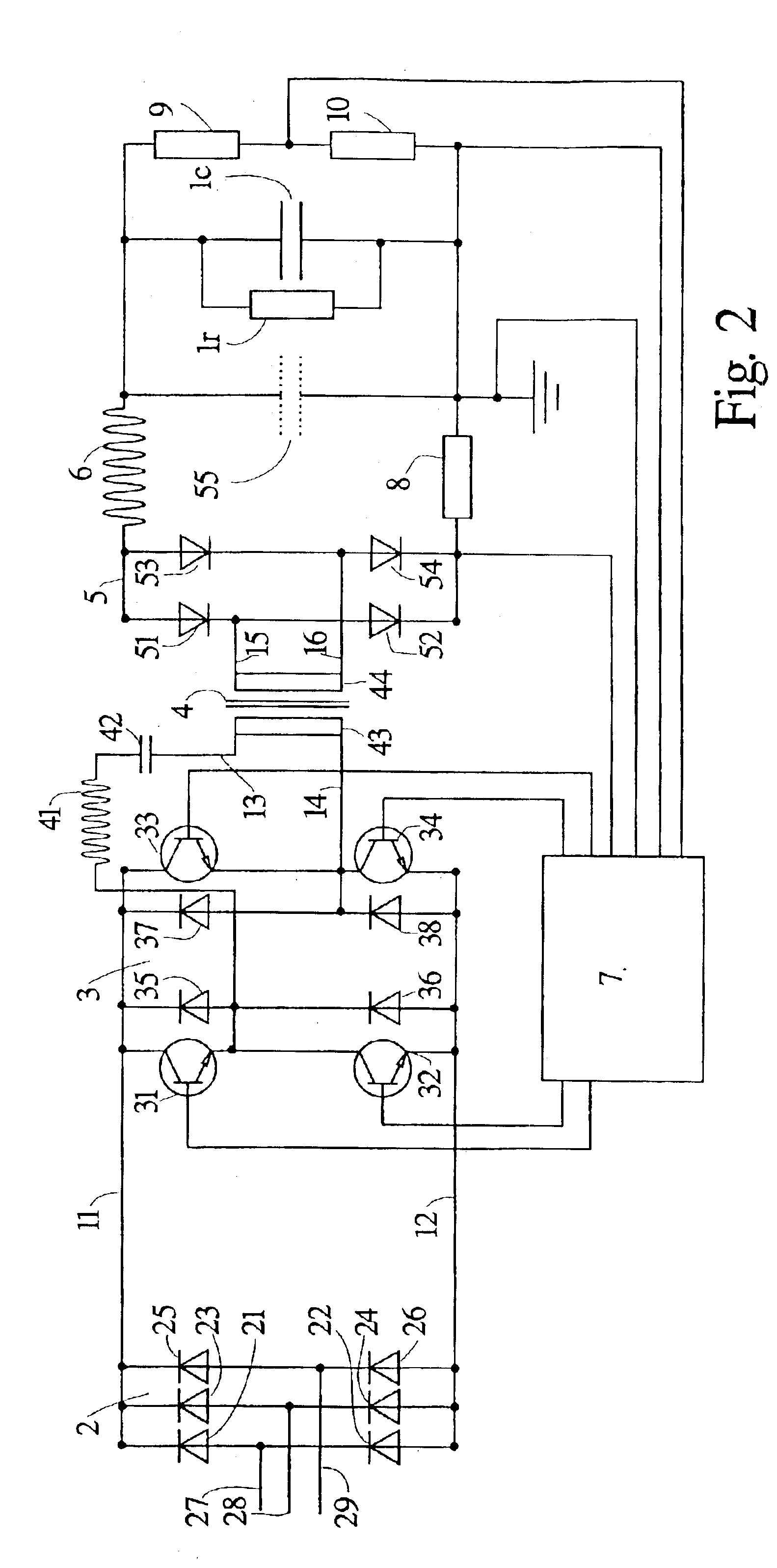Method for protecting a DC generator against overvoltage
a technology for dc generators and overvoltages, applied in the direction of dc-dc conversion, power conversion systems, instruments, etc., can solve problems such as the risk of catastrophic damage to equipment, and achieve the effect of avoiding fatal breakdowns of modems
- Summary
- Abstract
- Description
- Claims
- Application Information
AI Technical Summary
Benefits of technology
Problems solved by technology
Method used
Image
Examples
Embodiment Construction
FIG. 1 shows in an outline circuit diagram a current generator in the form of a voltage transducing device that supplies high-voltage direct current to a precipitator 1. The device consists of a three-phase rectifier bridge 2, a pulse generator 3, a transformer 4, a full wave rectifier bridge 5 for single-phase, a choke 6 and control equipment 7 with associated measurement resistors 8, 9 and 10.
The three-phase rectifier bridge 2 comprises six diodes 21 to 26 and is connected via three conductors 27, 28, 29 to a normal three-phase AC network.
The pulse generator 3 consists of four transistors 31-34 and four diodes 35-38. The transistors are controlled by their bases being connected to the control equipment 7.
Between the pulse generator 3 and the primary winding 43 of the transformer 4, a series resonance circuit is connected consisting of a choke 41 and a capacitor 42.
The full wave rectifier bridge 5 consists of four diodes 51-54.
In addition to the connection to the transistors 31-34,...
PUM
 Login to View More
Login to View More Abstract
Description
Claims
Application Information
 Login to View More
Login to View More - R&D
- Intellectual Property
- Life Sciences
- Materials
- Tech Scout
- Unparalleled Data Quality
- Higher Quality Content
- 60% Fewer Hallucinations
Browse by: Latest US Patents, China's latest patents, Technical Efficacy Thesaurus, Application Domain, Technology Topic, Popular Technical Reports.
© 2025 PatSnap. All rights reserved.Legal|Privacy policy|Modern Slavery Act Transparency Statement|Sitemap|About US| Contact US: help@patsnap.com



